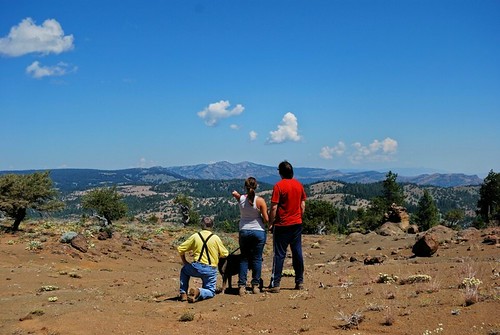
The United States has 757 wilderness areas covering nearly 110 million acres of public land, but just one of your photographs could be among those displayed at the Smithsonian’s National Museum of Natural History as part of a year-long celebration of the 50th anniversary of the Wilderness Act of 1964.
“Wilderness Forever” is a professionally juried photo contest by the 50th Anniversary National Wilderness Planning Team, or Wilderness50. Approximately 50 winning contest entries will be chosen for display as large format prints at the Smithsonian. Professional, amateur and student photographers are encouraged to submit photographs accompanied by personal stories and memories of the scenes depicted.
"We're very excited to share the public's own visions of America's beautiful wilderness lands and to educate visitors about the importance of preserving our natural heritage through this remarkable photography exhibition," said Charles Chen of the Smithsonian Museum of Natural History.
The contest deadline is Sept. 3, 2013.
Contest guidelines and entry instructions provide more details about how to enter the contest.
The categories are:
- Scenic Landscape: Dramatic scenes and unusual perspectives of protected wilderness land, providing expansive views, including plant life: flowers, trees, and other flora in natural habitat, close-ups, wide-open spaces, storms, sunsets and other natural views.
- Wildlife: Wild animals photographed within the boundaries of wilderness areas; animal portraits, behavior, predation and adults with young.
- People in Wilderness: Adventurers, backpackers, hikers, canoers and other activities; groups, families and individuals in natural settings, action, artistic perspectives and artistic compositions (silhouettes, motion shots, creative lighting, portrayals of solitude and primitive recreation, etc.)
- Most Inspirational Moment: Images of wilderness locations that have a very special story and personal meaning to entrants.
More information about the celebration of the Wilderness Act is available at Wilderness50th.org, a coalition of federal agencies, non-profit organizations, academic institutions and other wilderness user groups.
Of the 757 national wilderness areas, the Forest Service manages 55 percent, or 439. These congressionally designated land masses are created for their historical, cultural and political experiences over time. The Wilderness Act of 1964 defines wilderness as lands that contain ecological, geological, scientific, educational, scenic or historical value.
To find more detailed information about wilderness areas, go to Wilderness50th.org or to Wilderness.net, a website that connects federal employees, scientists, educators and the public with their wilderness heritage.
Wilderness50 is a coalition of more than 25 non-profit organizations, academic institutions, and government agencies that is planning and implementing local, regional, and national events and projects.
Follow the 50th anniversary celebrations on Facebook and Twitter.



